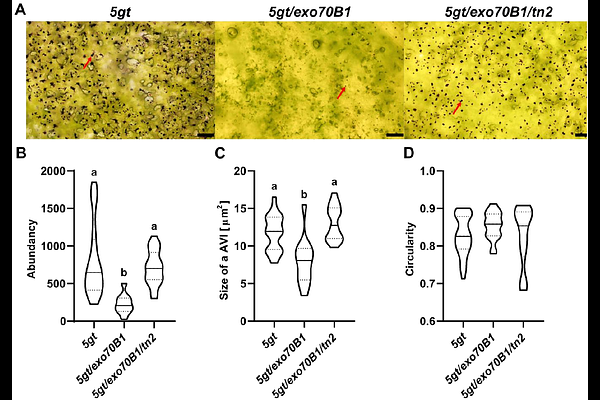Salicylic acid accumulation correlates with low anthocyanin production in Arabidopsis

Salicylic acid accumulation correlates with low anthocyanin production in Arabidopsis
Drs, M.; Iakovenko, O.; Orozco, J. S. H.; Trhlinova, P. B.; Markovice, V.; Zarsky, V.; Pecenkova, T.; Janda, M.
AbstractAnthocyanins, flavonoid pigments, are essential photoprotective agents and play a pivotal role in enhancing plant resilience to environmental stressors. It has been shown that anthocyanin production is inhibited when pattern-triggered immunity (PTI) is activated in Arabidopsis thaliana. An important component of PTI is the phytohormone salicylic acid (SA). Interestingly, exogenous treatment with SA has been shown to induce anthocyanin content in grape, apple, maize roots, rose callus, or Arabidopsis seedlings. In this study, we used several A. thaliana mutants with modulated SA content to decipher the role of endogenous SA in anthocyanin production in A. thaliana. We treated WT and mutants with anthocyanin-inducible conditions and measured anthocyanin content using spectroscopy. We showed that high endogenous SA accumulation correlates with low anthocyanin production. This was confirmed by the treatment of the A. thaliana seedlings with exogenous SA. Additionally, using microscopy in the 5gt mutant, which exhibits enhanced production of anthocyanin vesicular inclusions (AVIs) due to the inhibition of ligandin-dependent vacuolar import, we showed that high endogenous SA also correlates with lower AVI abundance. Comparative analysis of Arabidopsis WT and mutants used in this study indicates a possible inhibitory effect of SA accumulation on anthocyanin content under anthocyanin-inducible conditions (AICs). We suggest that under AICs, SA downstream signaling independent of NPR1 is responsible for lower anthocyanin accumulation.